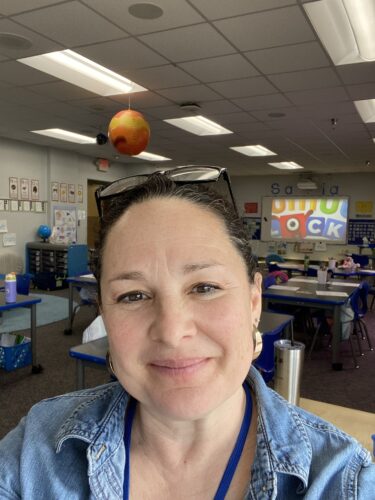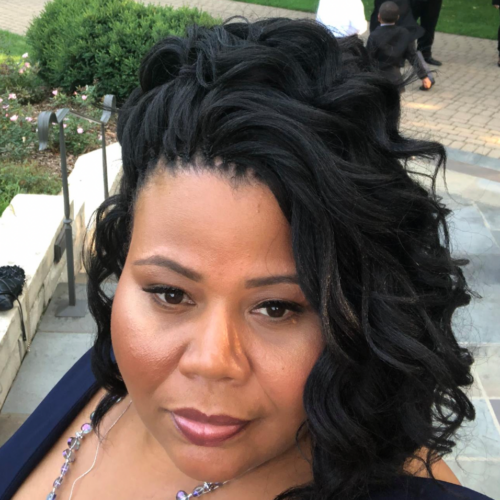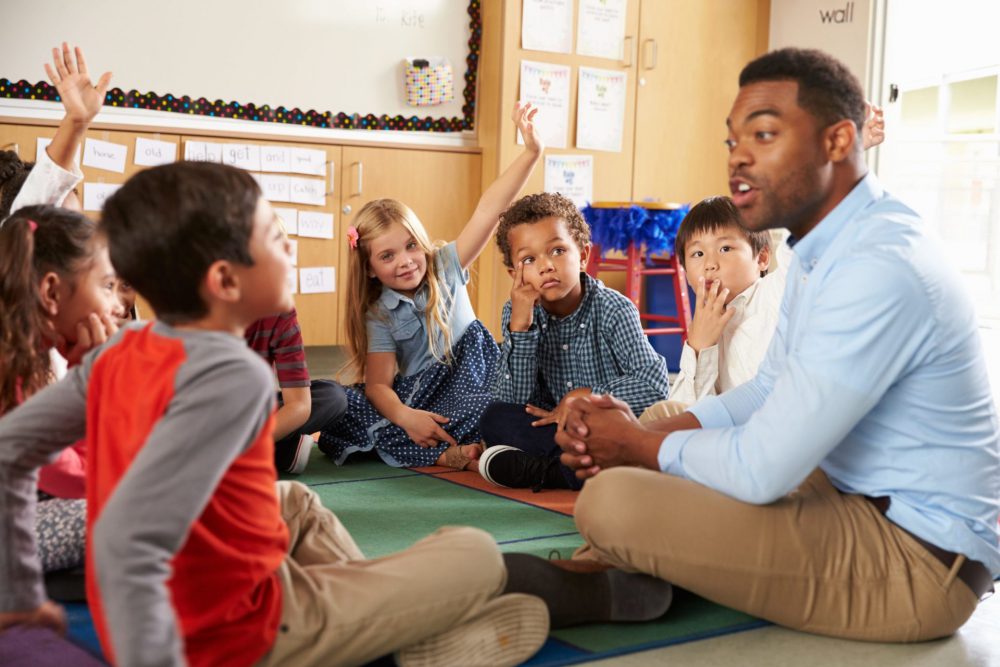
Welcome to Part 3 of UnboundEd’s Multilingual Learner (MLL) Digital Hearth Series. This series is a “digital fireside chat,” where we’ll discuss topics that bridge the gap between research and practical application. These chats provide insights into equity-centered mindsets, successful advocacy, and progressive system upgrades that support our schools’ MLLs.
UnboundEd is pleased to introduce a Standards Institute™ Pathway for educators of MLLs in the elementary grades in the spring and summer of 2024, titled Accelerating English Language for Multilingual Students. As we prepare a place for you at this exciting event, we have asked experts in the UnboundEd community to share how they center MLLs. These educators work daily to ensure their MLLs experience grade-level, engaging, affirming, and meaningful — GLEAM™ — instruction.
Empowering Teachers: GLEAM-Aligned Planning and Instructional Strategies for MLLs in K–5
GLEAM™ Instruction is only part of the GLEAM instruction hypothesis. The hypothesis posits that when we interrogate our mindsets about students and our expectations of students and ourselves, we sometimes find that our actions don’t align with our beliefs. GLEAM instruction allows one to bring mindsets and actions together in clear focus. When we believe our students can succeed, our teaching shifts from “I taught it, but they didn’t get it” to “I taught it, they didn’t get it, so what do I need to do to support them in a productive struggle?” Students need engaging instruction. “How can I empower them to see the relevance of the subject matter to their identities?” Students need affirming instruction. “How do I create a community where students can develop their socio-political lens?” — meaningful instruction.
In this blog, educators answer three questions about how GLEAM instruction relates to MLLs. They start with a question about mindset, then move on to planning for and implementing GLEAM instruction. LeAndrea Taylor, Program Design Specialist, UboundEd is the moderator of this conversation.
Featured Experts


Michelle Hunsberger

Vincent Lucas

Andrea Robinson

Miriam Swirski-Lubin

LeAndrea Taylor
From your experience, what common misconceptions about MLLs do you see in your experience teaching, leading, consulting, or coaching (K–5)?
Megan: There are numerous misconceptions surrounding the teaching of MLLs. These misconceptions often stem from deficit mindsets, a lack of understanding about how students’ unique funds of knowledge can accelerate second language acquisition, and an assumption that students need to be fluent in their first language to acquire a second.
Michelle: From my experience, the biggest one is either students need to learn English as a prerequisite for reading instruction – or really most instruction, but reading is a big one — or MLLs do not have any, or limited, background knowledge needed for content learning. Basically, they come to us “not knowing anything” when in fact, they do know, just not in English yet.
Vincent: Too often, MLL students are being viewed from a glass-half-empty perspective when, in fact, they should be celebrated for enriching our classrooms, sharing their funds of knowledge, and improving all educational spaces.
Megan: That is similar to the misconception, fueled by unchecked deficit mindsets, viewing MLLs as lacking the intellectual ability to engage with complex academic concepts in English. This mindset leads to lowered expectations for MLLs and can hinder their academic progress. In reality, MLLs bring a wealth of knowledge and experiences from diverse linguistic backgrounds, which we should leverage to enhance their learning and language acquisition.
Miriam: There’s a misconception that learning two languages simultaneously confuses children. In reality, a kindergartner may be able to identify three colors in English and five in Spanish, but this still means they can identify all the colors.
Megan: Research has shown that proficiency in one language can actually support the development of another language. Students’ linguistic abilities are interconnected, and building on their existing language skills can facilitate acquiring a new language.
The misconception that students cannot access grade-level content overlooks the resilience and adaptability of MLLs. With appropriate support and scaffolding, these students can engage with challenging academic material and succeed in their learning. Educators must provide differentiated instruction that meets the diverse needs of MLLs and ensures their access to rigorous content.
Andrea: The two most common misconceptions I encounter among teachers are that students come to us without background knowledge and that lack of student engagement is a sign of indifference or disinterest. In my experience, neither is true.
The bridge is GLEAM instruction. In this case, MLLs need grade-level instruction. It must have strategic scaffolding and focus. But this takes some extra planning. Teachers only have so much time in the day to prepare. Why focus on developing language objectives for K–5 students?
Vincent: When we combine access to BOTH grade-level learning objectives and language development standards, we will progress toward academic and language proficiency for all students.
Andrea: Exactly. Language objectives help teachers plan for and deliver instruction that is comprehensible to students. They make explicit the academic language needed for teachers and students in order to access the content and demonstrate knowledge of the standards.
Miriam: Developing language objectives for K-5 students makes our teaching more effective and efficient. In this way our planning makes stronger instruction for all students, including MLLs.
Language objectives are critical. What are one or two never-fail strategies that support most language objectives to make texts and tasks accessible?
Andrea: For students who speak a Latin-based language, I leverage their knowledge of cognates to support students’ ability to construct meaning. This is often an entry-point activity used to make predictions about the text. I utilize fluency routines to support comprehension, chunk the text to summarize sections, and note the gist. Each of these approaches requires minimal preparation.
For topics with which students might be less familiar, I incorporate visuals to support the acquisition of academic vocabulary and build background through videos – setting a purpose for viewing ahead of time and following the video with opportunities for discourse.
Miriam: Repeated readings allow students to build the full picture of a text a little bit at a time. In this way, they become detectives seeking to uncover the meaning of a text. Annotating the text to capture this thinking allows students to revisit clues and go deeper into the text.
Newcomers are developing their receptive skills. Therefore listening, pointing, and imitating clear models opens the door for these students to interact with the same tasks and texts as the rest of the class.
Andrea: Yes — for newcomers, the level of language students can process or interpret (reading and listening) likely differs from the level of expressive language (speaking and writing) that students can demonstrate. Collaborate with colleagues using English language proficiency rubrics to determine appropriate expectations and scaffolds for language production. Recognize and honor the language and knowledge students bring with them. Commit to the belief that students can and should access grade-level texts and tasks. Literacy is power.
How do native English speakers in K–5 benefit from taking additional time to focus on amplifying language in the classroom?
Michelle: Content is taught through language. All students are Academic Language learners. This goes beyond vocabulary (although that is essential) to the various language structures that are common in particular content areas. When educators understand this, they can provide academic language instruction that benefits all students.
Miriam: Amplifying language allows all students to listen and communicate more effectively. In the analysis of the spoken and written word lies the complexity of ideas and concepts.
Andrea: Through explicit instruction, students understand how language is structured, become more proficient at interpreting the meaning of words and phrases, and develop their ability to express themselves. Language instruction helps all students construct meaning – which results in students becoming better readers, writers, and thinkers.
LeAndrea: I’m struck by the depth of insight shared by our panelists. It’s clear that addressing misconceptions about MLLs is key. It is essential for improving language acquisition and fostering a more inclusive and effective educational environment for all students. Our discussion has underscored the transformative power of language instruction. Let’s carry forward this commitment to embracing linguistic diversity and providing equitable opportunities for every learner. Check out the “Accelerating English Language for Multilingual Students” Standards Institute pathway, facilitated this summer through UnboundEd!
The success of MLLs begins with the mindset and expectations of a school leader. School leaders set the priorities and tone for the learning environment. When leaders and teachers embrace the GLEAM hypothesis to guide their instructional planning and approach, all students can thrive. We encourage you to attend the Accelerating English Language for Multilingual Students pathway at Standards Institute! In this pathway, you will learn about language objectives, instructional strategies, and family support to improve the outcomes for the MLLs in your community. Bring a team!
READ THE MULTILINGUAL LEARNER DIGITAL HEARTH SERIES

Multilingual Learner Digital Hearth Series: Part 1

